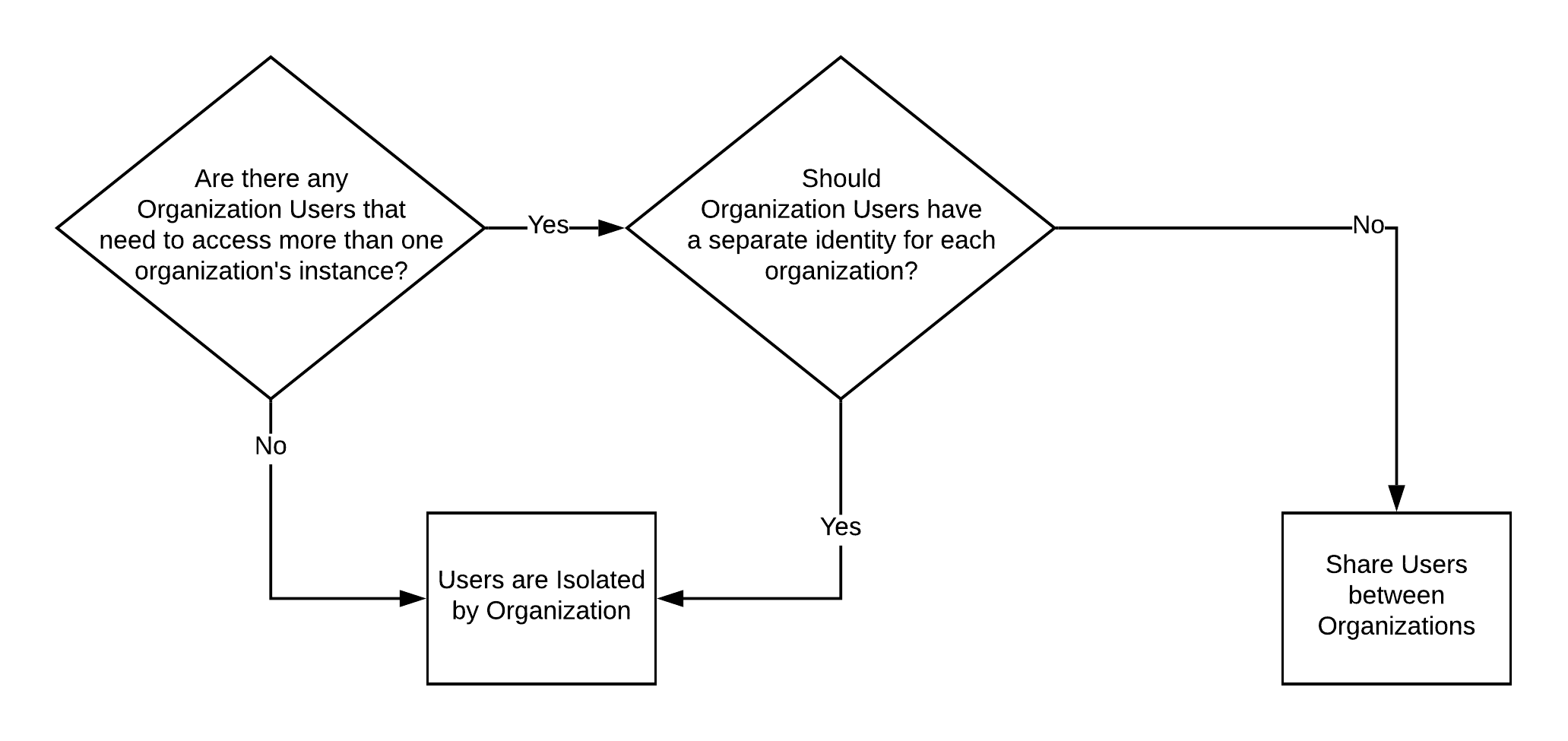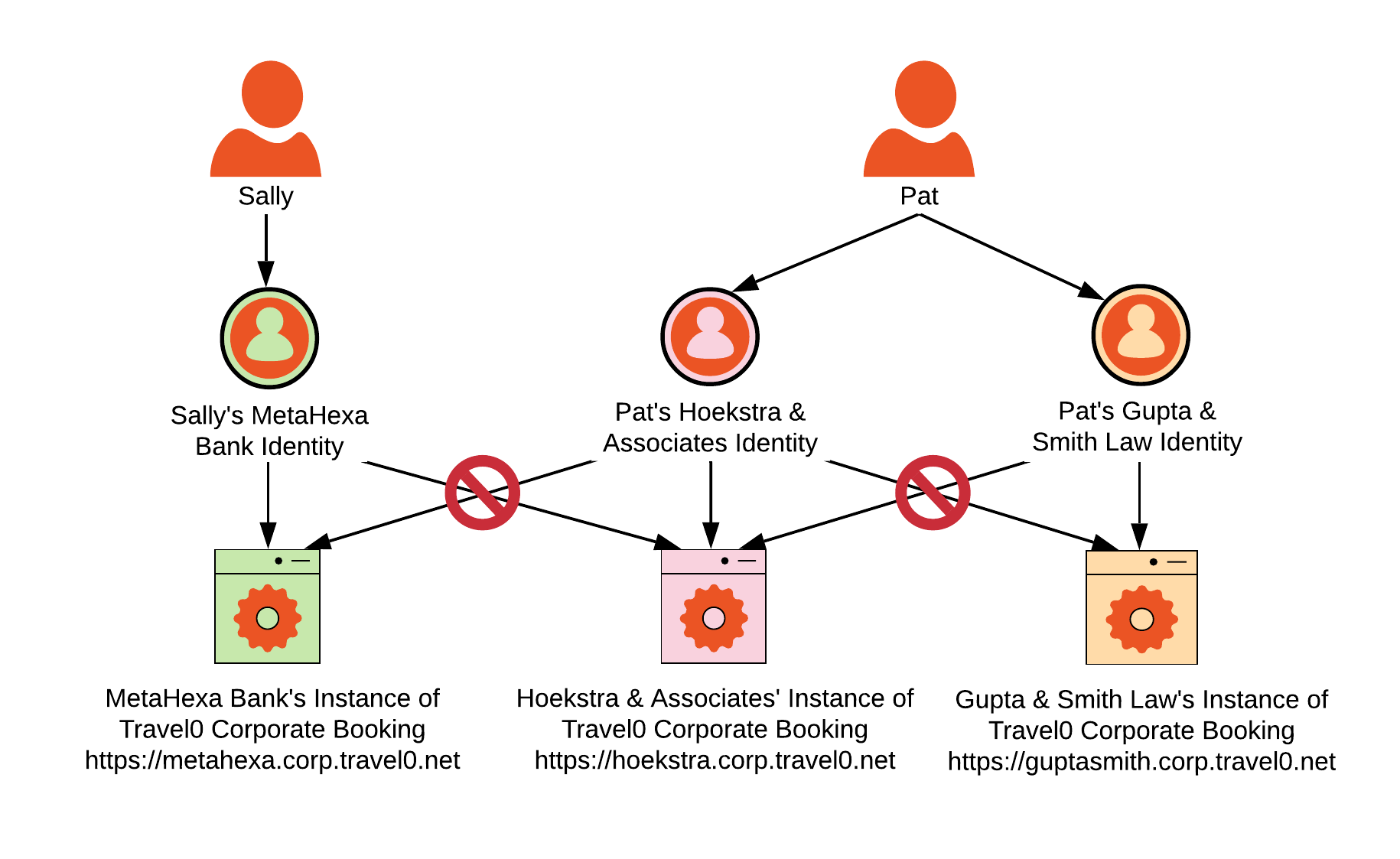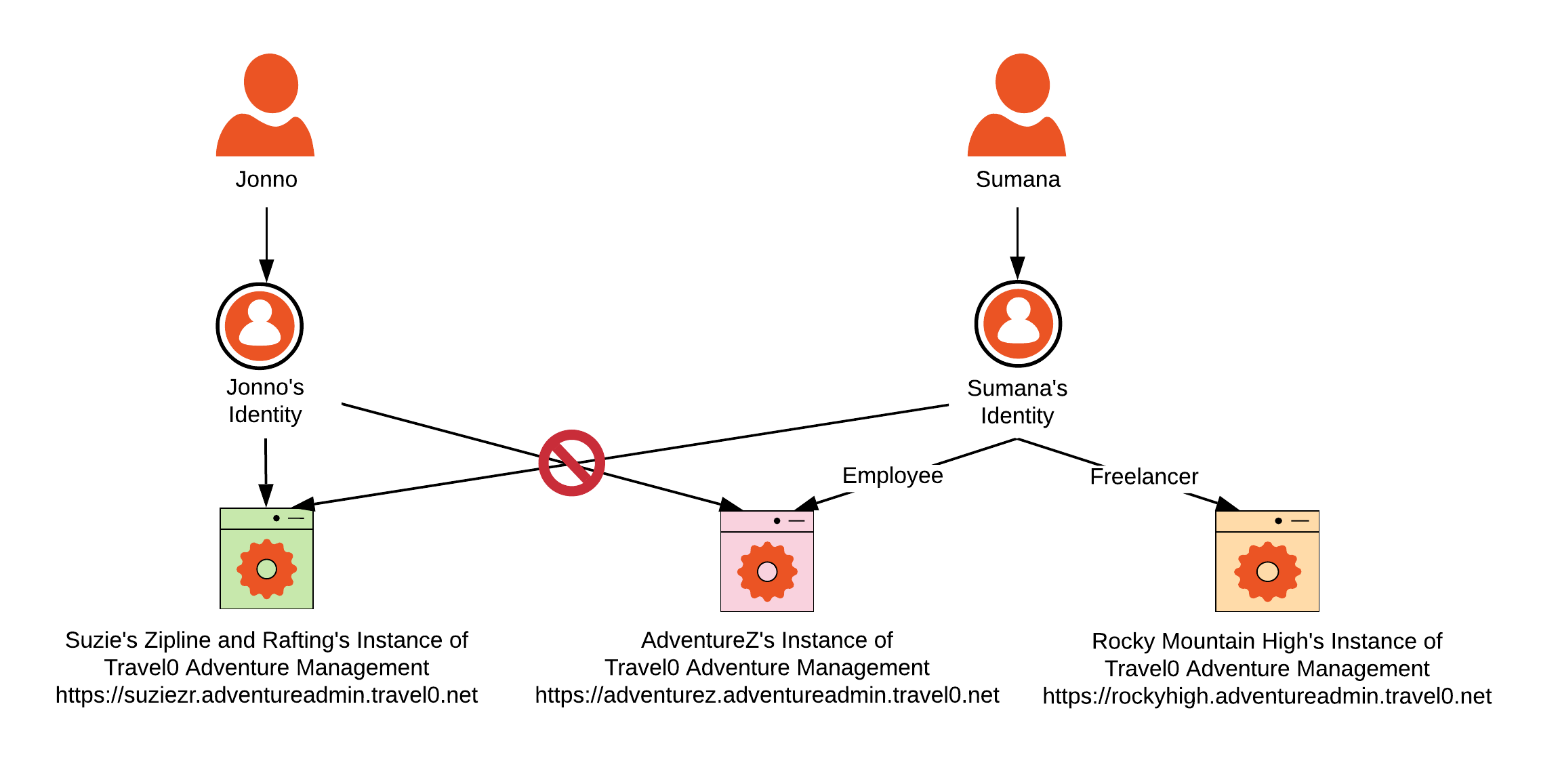-
Travel0 Corporate Booking: Provides organizations with an online application where their employees can log in to and book work-related travel. Organizations that are customers of this application include:
- Hoekstra & Associates: A small law office with just a few employees. They do not have an IT department and don’t have the time or capacity to learn how to set up a corporate Identity Provider (IdP).
- Gupta & Smith Law: A larger law office, but they also do not have an IT department and don’t have the time or capacity to learn how to set up a corporate IdP.
- MetaHexa Bank: A large finance organization. They provide banking and insurance services and have their own IdP.
- Many Student University (MSU): A large university with several campuses, where each campus has its own IdP.
-
Travel0 Adventure Management: Allows organizations to create and market adventures such as whitewater rafting. Guides (who are freelance, or employees of some third-party travel/event organization) can use this application to create an account and handle scheduling to lead adventures. Organizations that are customers of this application include:
- AdventureZ: A large tour/event organizer. They have their own IdP that they use for their employees. They rarely need freelancers because they have enough guides on staff, some of whom only work during busy times. They also facilitate their guides’ ability to do freelance work for other companies.
- Rocky Mountain High Adventures: A new group entering the market for the first time. The cofounders run tours; they reach out to freelancers for help during busy times.
- Suzie’s Rafting and Ziplines: This company has been around for a long time. They have a staff of guides that handle most of their events, but they also hire freelancers when busy.
Terminology
Many of the words used in the provided guidance can mean a number of different things. Take a moment to read through each definition so it’s clear when reading through the examples who is fulfilling what role:- Auth0 Tenant (otherwise known as ): Tenant that you create in Auth0. It is an instance of an Authorization Server and represents one or more user domains.
- Auth0 Organizations: Refers to the Auth0 Tenant feature designed to support organizations. An instance of an Auth0 Organization will typically refer to a specific customer of yours.
- Employee: Person who works for your company. They will typically have an account in your (IdP) and may need admin access to one or more Organization Tenant instances. We will only use the term Employee to refer to Employees of your company. For users who belong to your customers’ Organizations, see Organization User.
- Identity Provider (IdP): Service, such as Auth0, that manages authentication of users, and optionally, provides user profile information and/or credentials management. The service may also provide delegation of credential validation and profile management via the use of a third-party IdP (such as Azure AD, Google, Facebook, etc.)
- Organization: Third-party company that is one of you customers. You may refer to an organization instance that is created for your application as a tenant; we will refer to it as an Organization Tenant to avoid confusing it with an Auth0 Tenant.
- Organization Tenant: Refers to a tenant that has been created for your customer as part of your application subscription/provision. This is different from an Auth0 Tenant.
- Organization User: Person who is logging in to the application as a member of an Organization. This may be an employee (of the Organization) or a customer. Any user referenced in an organization context can be considered an Organization User.
User Isolation
It’s important to determine the type of application you provide when it comes to organizational user isolation. There are two fundamental approaches to how and where each of these users are stored: users isolated by organization and users shared between organizations.
Users isolated by Organization
Each organization has its own set of users, and users cannot and should not be able to access other organizations. If they attempt to do so, they should be rejected as unauthorized. If desired, you can force your users to create a separate account for each organization they belong to. As a person, they would be considered to be two or more different users. In this scenario, a user is tied directly to the organization to which they belong or have access. Users have two options for how they log in: A) they create credentials in identity storage provisioned for the appropriate organization (i.e., UserID/Password Database Connection in your Auth0 Tenant), or B) they log in using their own organization’s IdP. In this use case, it would not make sense for a user to be part of multiple organizations, and the better practice would be to create a separate identity for each organization. Using Travel0 Corporate Booking as an example, the diagram below shows how this would look:
Use cases when isolating by organization
Applications that have users isolated per organization typically support three different use cases. For the examples in this section, we’ll use the Travel0 Corporate Booking application scenarios described in our introduction. Travel0 is the Auth0 customer.- Organizations that either don’t have their own IdP or don’t know how to use it. These tend to be smaller organizations that don’t have an IT department available to configure (SSO) with the organization’s Identity Provider (IdP), or else don’t have an organization IdP fit for the task. In our Travel0 Corporate Booking example, Hoekstra & Associates is such an organization.
- Organizations that prefer to configure their own IdP so that their employees don’t have to create a new set of credentials for your application. Most organizations fall into this category. In our Travel0 Corporate Booking example, MetaHexa Bank is such an organization.
- Organizations that require multiple authentication options. Examples of this type of organization include those that frequently acquire new companies, organizations like schools that allow staff and parents to log in to the same application, and organizations that invite partners or customers to log in to their application instance (i.e., B2B2C organizations). In our examples, Many Student University (MSU) would be such an organization.
Users shared between Organizations
A user may belong to more than one organization, and it would be convenient if that user did not have to have a separate identity/account as they navigate from one organization to another. Organizations can still use their own IdP in such cases.
Administrative access to Organizations
There are scenarios where you will need to provide administrative access across your organizations. Typically, this will be for administrative tasks outside of user Profile/Account management (as described in Profile Management), and you may need to provide access to your employees as well as to third parties.Best PracticeAlways enable Multi-factor Authentication (MFA) for Auth0 Tenant administrators who are provided access via the Auth0 Dashboard. Note that you must follow a different process to enable MFA for an Auth0 Tenant administrator than you do to enable MFA for the Auth0 Tenant itself. To learn how to enable MFA for an Auth0 Tenant Administrator, see Manage Dashboard Access with Multi-factor Authentication.

